Which AMD Ryzen 3000 CPU for Gaming?
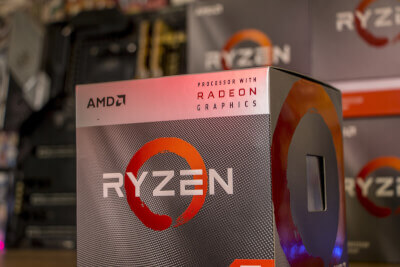

We’ve already tested a lot of the new Ryzen 3000 CPUs as well as AMD’s newest APU: Ryzen 5 3400G. At the time of launch, we promised a comprehensive test of the gaming performance of all of the processors when combined with a dedicated graphics card, and we aim to honor this promise today. As such, we’ve strapped the AMD Radeon RX 5700 XT to the test bench and thrown the entire range of processors through our testing procedure.
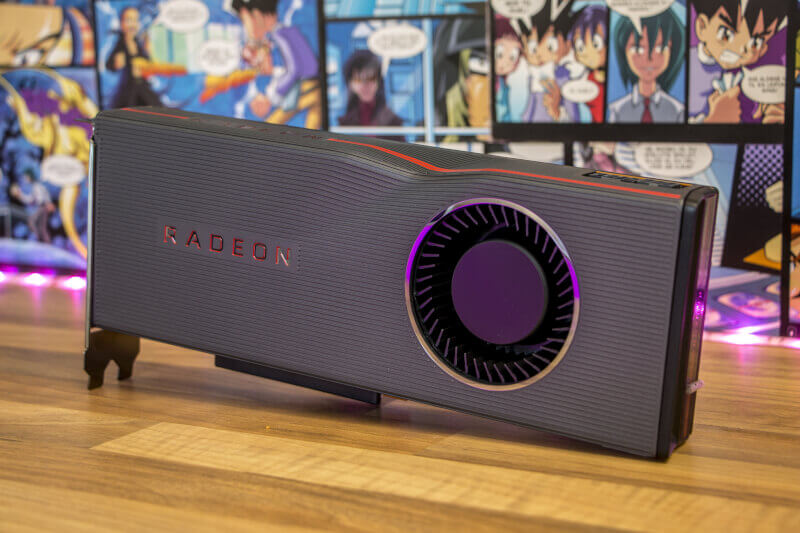
Read our review of the AMD Radeon 5700 XT here!
In rough terms, today’s test is about seeing how well the individual processors work together with a high-end graphics card, and how things look in relation to any potential bottlenecking. The complete test system consists of the following, which is then combined with four different AMD Ryzen 3000 processors.
ASRock X570 Taichi
AMD Radeon RX 5700 XT
G.Skill TridentZ Royal 2x 8 GB 3600 MHz DDR4
AORUS 2 TB NVMe PCIe4 SSD
Seasonic Gold 1300 watt PSU
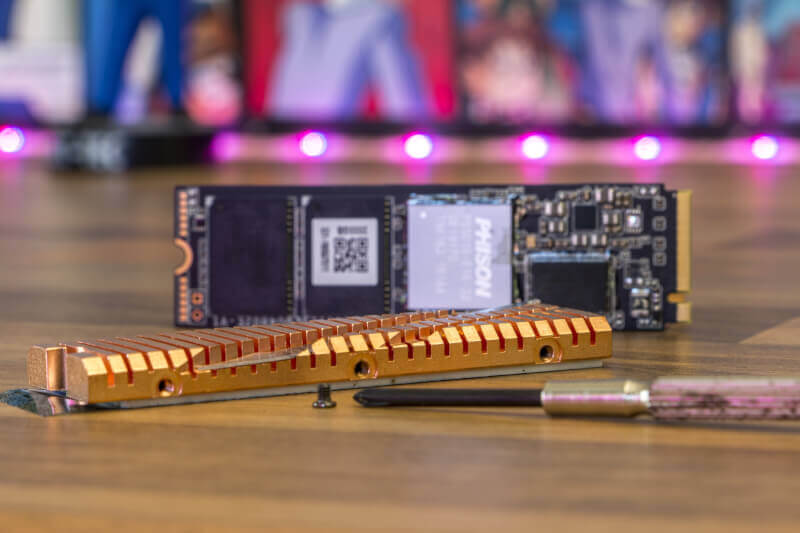
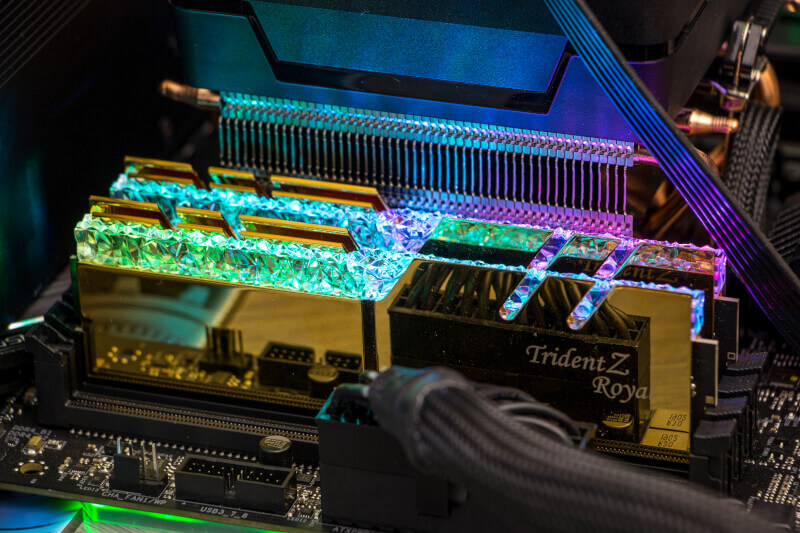
AMD Ryzen 5 3400G
Specifications:
Cores: 4
Threads: 8
VEGA cores: 11
Base Clock: 3.7 GHz
Boost Clock: 4.2 GHz
DDR4 Clock: 2933 MHz
PCIe: 3.0
TDP: 65 W
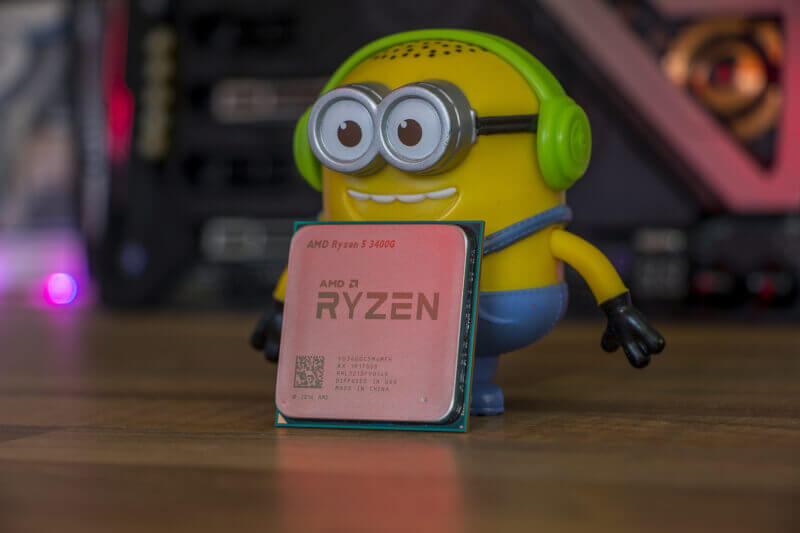
The Ryzen 5 3400G is AMD’s second generation of APU, which includes built-in Radeon VEGA cores. Here, we are dealing with an APU which on its own can run a fine entry-level machine quite cheaply, when the younglings are up to trouble in Fortnite, Overwatch and CS:GO. The 3400G and 3200G are the only ones in this line-up that feature an iGPU, which means that they do not require a dedicated graphics card.
Read our test of the Ryzen 5 3400G here
Price: $149.99
AMD Ryzen 5 3600X
Specifications:
Graphics Model: Discrete Graphics Card Required
Cores: 6
Threads: 12
Max Boost Clock: 4.4 GHz
Base Clock: 3.8 GHz
Thermal Solution: Wraith Spire
TDP: 95 W
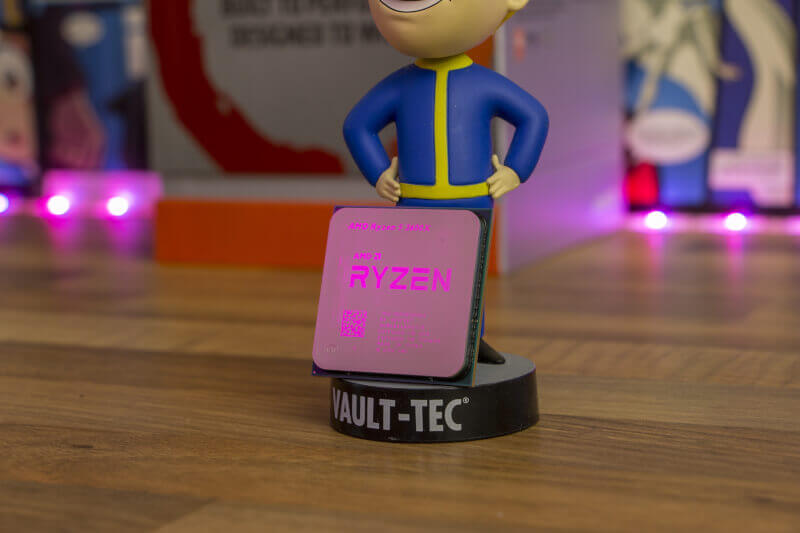
The Ryzen 5 3600X takes us one step higher up on the Ryzen 3000 ladder, and here, we get a bit more power to play around with given the upgrade to a 6-core and 12-thread configuration. On the other hand, we no longer enjoy the benefits of an iGPU and, as such, a dedicated graphics card is needed. The Ryzen 5 3600X is a strong candidate for an entry-level to mid-range system that is capable of handling more demanding games than its aforementioned smaller brother - as long as it is combined with a proper graphics card.
Price: $239.99
AMD Ryzen 7 3700X
Specifications:
Graphics Model: Discrete Graphics Card Required
Cores: 8
Threads: 16
Max Boost Clock: 4.4 GHz
Base Clock: 3.6 GHz
Thermal Solution: Wraith Prism with RGB LED
TDP: 65 W
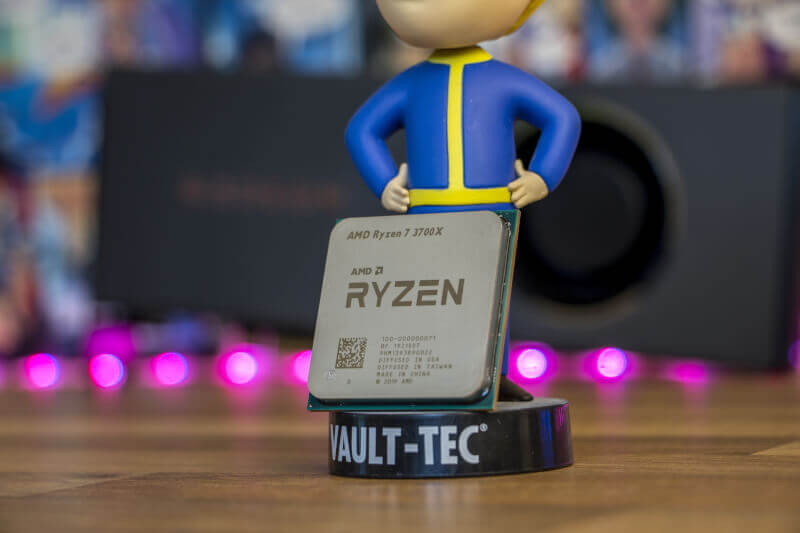
With the Ryzen 7 3700X things are getting real. We’ve now stepped up to an 8-core and 16-thread configuration with a boost clock of 4.4 GHz. We get lots of power for both gaming but also in other heavy 3D rendering and image processing applications. Here, we are dealing with a serious mid-range system that closes in on the lower end of the HEDT segment.
Read our test of the Ryzen 7 3700X here
Price: $329.99
AMD Ryzen 9 3900X
Graphics Model: Discretee Graphics Card Required
Cores: 12
Threads: 24
Max Boost Clock: 4.6 GHz
Base Clock: 3.8 GHz
Thermal Solution: Wraith Prism with RGB LED
TDP: 105 W
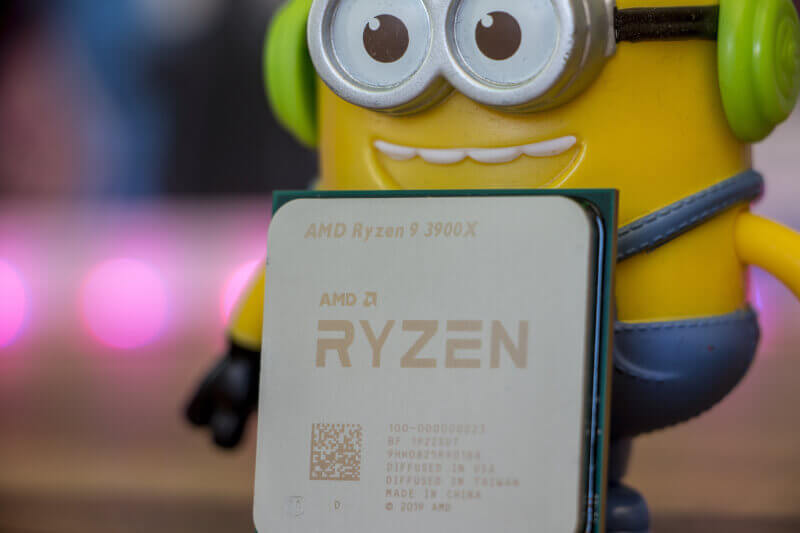
With the Ryzen 9 3900X, we are nearing the top of the HEDT segment, and here we are only surpassed by the 3950X. All of a sudden, consumers are provided with a whopping 12 cores and 24 threads, which will give us loads of rendering power in heavy production applications, but at the same time, plenty of performance to support the heaviest graphics cards when gaming.
Read our test of the Ryzen 9 3900X here
Price: $499.99
Read our walkthrough of the AMD X570 chipset here
The Test Phase
In this test, I will include various triple A titles (AAA) and a couple of eSport titles so that we can see how the individual processors work together with our AMD Radeon RX 5700 XT graphics card. We test in the following games and applications:
Far Cry 5
Shadow of the Tomb Raider
Deus Ex: Mankind Divided
Assassin’s Creed: Odyssey
Overwatch
Counter Strike: Global Offensive
3DMark Firestrike
3DMark Time Spy
Superposition Benchmark
AAA Titles:
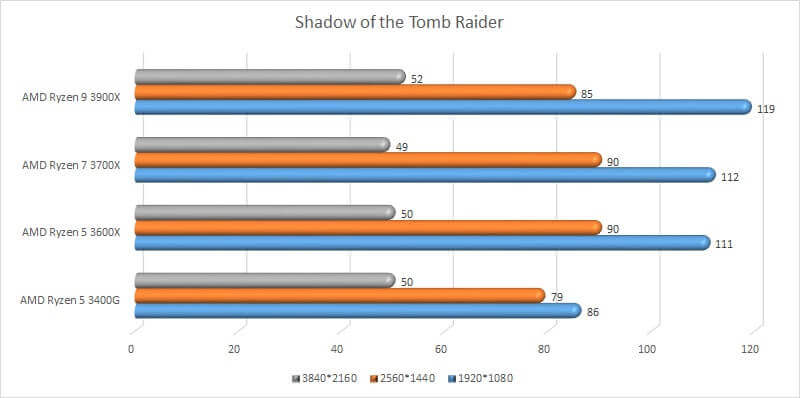
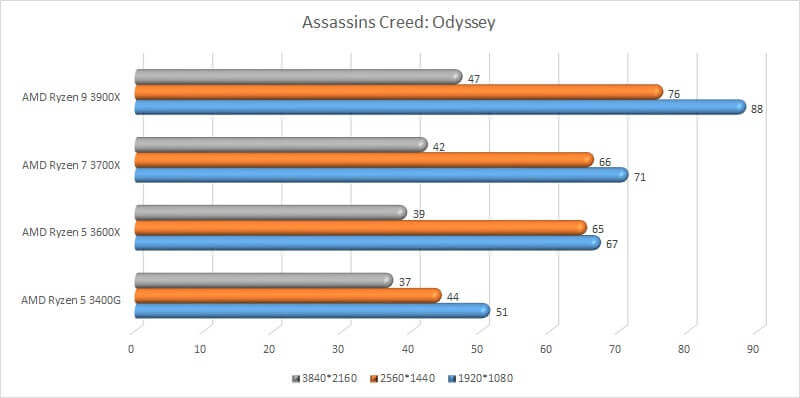
In our AAA titles, we clearly see that all of the processors are keeping up very well both in 2160p and 1440p. In 1080p things are a bit more interesting since this is where really high frame rates can be reached, which also means that this is where the bottlenecks will start appearing. The Ryzen 9 3900X manages to squeeze out the last bits of performance from our Radeon RX 5700 XT compared to the other processors. The Ryzen 5 3600X and Ryzen 7 3700X are not that far from each other in general, but the 3700X edges it out just a bit.
eSport Titles:
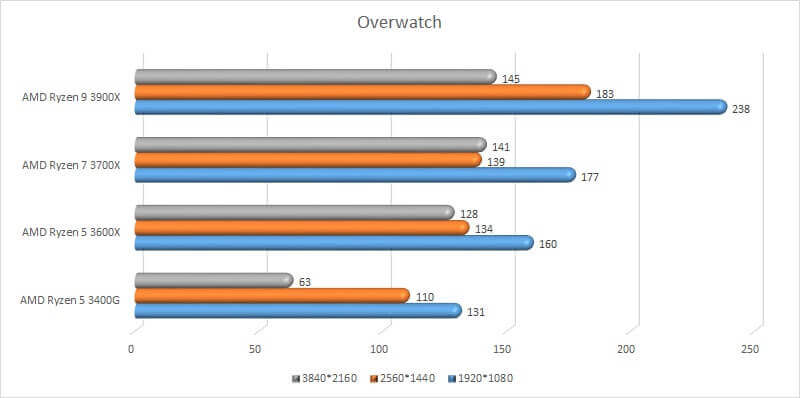
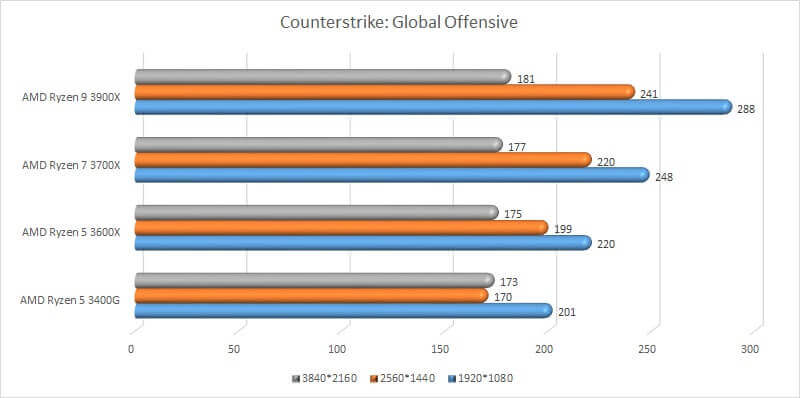
In the lighter eSport titles things are quite different since these demand quite a bit more from the processor as they must be able to keep up with the high frame rates. So, things look significantly different here. In Overwatch, where the graphics card still plays an important role, the Ryzen 5 3400G is really put to the task, and here the Ryzen 9 3900X is able to deliver double the frame rate when using the same graphics card. In CS:GO, which is more dependent on the CPU, the difference isn’t as big, but there’s still plenty to gain.
Synthetic Benchmarks
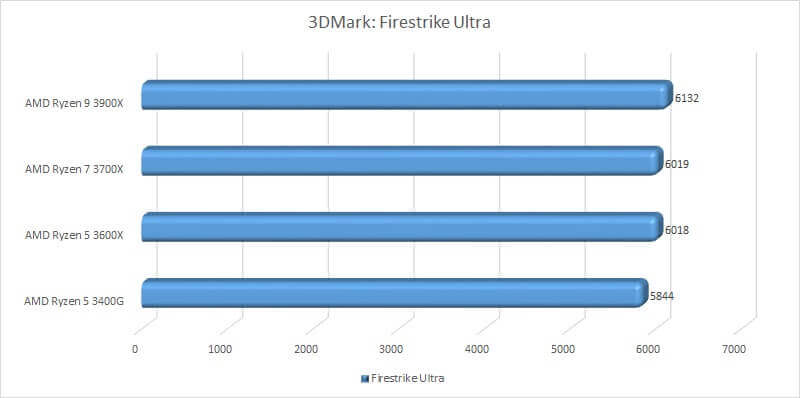
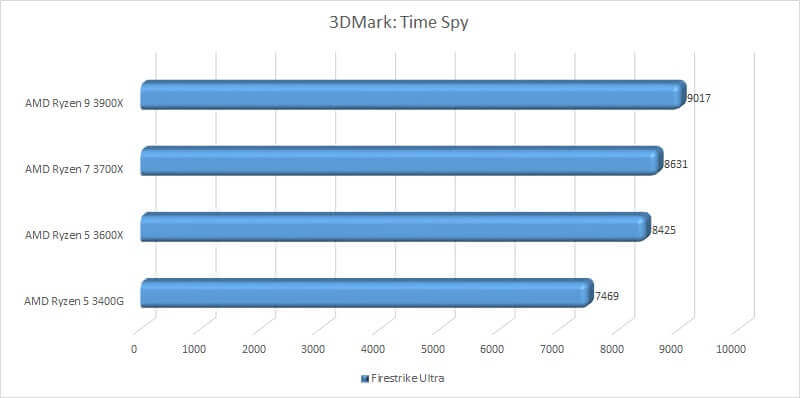
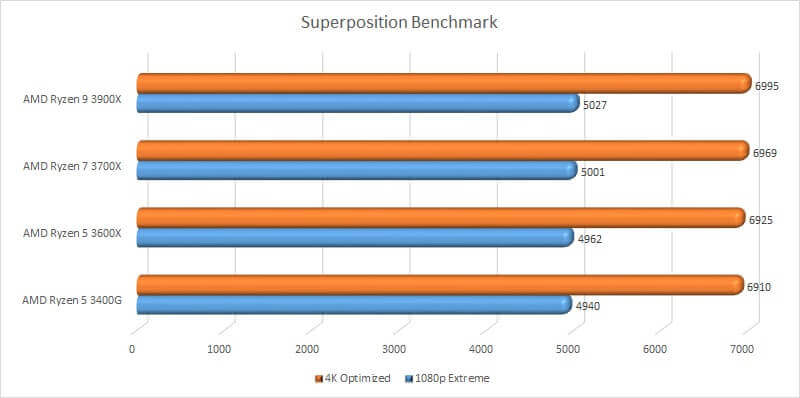
The synthetic benchmarks are added mainly in order to showcase how the CPUs handle actual graphical tasks such as video and 3D rendering, and here we can see that they all achieve similar results with next to no significant difference between them. Time Spy is the absolute heaviest of the bunch, and here we see that the Ryzen 5 3400G puts the Radeon RX 5700 XT a bit to shame. In general, there’s not much of a difference to note here.
Conclusion:
If we are to conclude on the big question of which Ryzen 3000 processor is best suited for gaming, the answer to this must be the Ryzen 7 3700X. It is very reasonably priced and it performs excellently in all games. The Ryzen 9 3900X only edges it out a bit, but not enough to warrant the higher price tag. So, the conclusion must be that the winner is the 3700X, when combined with a proper high-end graphics card. But then there is of course the budget concern to keep in mind as well. If you for example are on a tighter budget and can’t afford purely high-end components, it might be a very good idea to look towards the Ryzen 5 3600X on an X470 or B450 motherboard. In that case, we manage to shave off quite a significant portion of the price of the CPU and motherboard, and on top of that more can be saved by opting for an RX 5700 non-XT, a GTX 1660 (Ti), an RTX 2060 or something else in that league. If we find ourselves with an even tighter budget, then the Ryzen 5 3400G becomes the answer to our prayers. It can easily handle eSport titles in 1080p without the use of a dedicated graphics card. It covers both components at a price of merely $149.99.
However, if your budget allows for it, and you know that you, next to gaming, will be handling heavy applications as well, it is a good idea to consider a Ryzen 9 3900X on an X570 motherboard since we then get those 12 cores and 24 threads and the support of PCIe Gen. 4, thereby unlocking the potential of those new NVMe PCIe4 SSDs. This does mean that we are within the HEDT segment, and this isn’t for everyone, which the price of the CPU and the X570 motherboards also reflect with their total price tag reaching around $700-800.
Ryzen 5 3400G: Awesome entry-level APU for the smaller budgets
Ryzen 5 3600X: The perfect choice for an entry-level/mid-range system with a bit more horsepower
Ryzen 7 3700X: The best choice for a gaming system combined with a high-end graphics card (Editor’s Choice)
Ryzen 9 3900X: If you don’t want to compromise and have no particular roof on your budget or simply want to show off to friends. No doubt the best choice if you also need to perform heavy graphical tasks
Latest processor - cpu
-
31 Octprocessor - cpu
-
16 Sepprocessor - cpu
AMD Ryzen AI 7 PRO 360 spotted
-
04 Sepprocessor - cpu
Intel scores big AI chip customer
-
04 Sepprocessor - cpu
Exclusively-Intel manufacturing store drawers
-
29 Augprocessor - cpu
Big performance boost for Ryzen CPUs
-
28 Augprocessor - cpu
Intel shares could fall in battle with TSMC and NV
-
28 Augprocessor - cpu
AMD is claimed to have been hacked
-
27 Augprocessor - cpu
Intel presents Lunar Lake, Xeon 6, Guadi 3 chips
Most read processor - cpu
Latest processor - cpu
-
31 Octprocessor - cpu
AMD will launch the Ryzen 7 9800X3D on November 7
-
16 Sepprocessor - cpu
AMD Ryzen AI 7 PRO 360 spotted
-
04 Sepprocessor - cpu
Intel scores big AI chip customer
-
04 Sepprocessor - cpu
Exclusively-Intel manufacturing store drawers
-
29 Augprocessor - cpu
Big performance boost for Ryzen CPUs
-
28 Augprocessor - cpu
Intel shares could fall in battle with TSMC and NV
-
28 Augprocessor - cpu
AMD is claimed to have been hacked
-
27 Augprocessor - cpu
Intel presents Lunar Lake, Xeon 6, Guadi 3 chips






